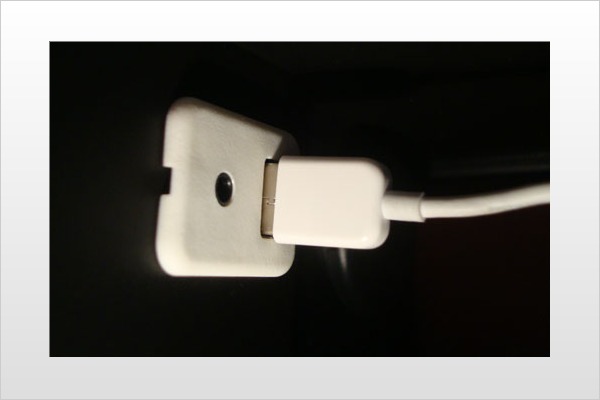
Your car probably has a CD player, but when's the last time you listened to music on a disc while driving? And why would you even want to carry bulky CDs into the car when your entire music library can fit on an iPod or other MP3 player? The short answer is sound quality.
While carrying compressed music into a car is convenient, it's usually lacking in terms of sparkling audio quality. So if you really care about how your music sounds in the car — and if you've invested in a premium OEM or high-performance aftermarket stereo system — the question involves the best way to convert music to compressed audio sources, and how can you ensure that you're making the best connection possible in your car?
Compression Has Its Consequences
Before we consider how to best connect portable media devices to the car, let's step back and consider the source — the digital music files themselves. When you buy a CD, you're usually assured that it has good sound quality. That's partly because the music data on CDs is uncompressed.
But when you download a song or rip a music file from a CD, it's typically compressed to save storage space, which usually degrades sound quality. It all comes down to the amount of compression and the resulting bit rate, or how many (kilo) bits per second (kbps) are being used to convey the original music signal.
When you download music and want the best sound quality, purchase files with the highest bit rate possible. Or when you rip CDs to create your own music files, use a high bit rate — at least 128 kbps or higher. Also rip or download files at different bit rates and audition them in your car to see how they sound. When in doubt, always use higher bit rates.
Audiophile Tips
Software used to create music files — different codecs such as AAC, WMA, MP3 — can provide varying acoustic results. For a given bit rate, AAC and WMA will generally sound better than MP3. And if you can find "lossless" files like FLAC (Free Lossless Audio Codec), those are best of all. Although lossless files are larger than AAC or WMA files, the sound quality will be identical to the original source recording.
Yet another way to ensure the best sound quality possible is to rip files from a CD as WAV files, which are also uncompressed and identical to the ones on a CD. Again, the drawback is that WAV files take up more storage space.
Bottom line: If you start with low-fidelity music files, your car's sound system won't do anything to improve it. If anything, it will only further expose the "lossy" data's deficiencies. The sound systems in most new cars have gotten pretty good. To supply yours with good-sounding music, start with the best-sounding files you can find.
Plugging in Portables
The iPod has become the de facto standard for portable music players, and if your car was built in the last few years, it may have an iPod connection and/or a USB port. While more manufacturers are allowing car owners to simply plug their iPods into an onboard USB port using the cable that comes with the device, others require a proprietary connection scheme.
These connections are convenient and the playback devices can usually be tucked away in a center console or glove compartment while music on them is accessed via a car's audio system controls. If your car has a proprietary iPod dock or a USB port for connecting a portable music device, use it. Fidelitywise, it's probably the best connection you'll find.
As a bonus, most automotive USB ports can also be used to connect a USB flash drive loaded with music files, and some automakers also supply SD and Compact Flash card slots for access to music on those media. These can all produce high-quality audio if they are loaded with high-bit-rate music files.
Wired for Sound
Another alternative is to connect a music player such as an iPod to a car's sound system with an analog cable. Specifically, the cable connects the player's headphone output to the car's auxiliary input jack. An aux-in is far from ideal, but it's low-tech, tried and true and inexpensive.
But even this approach has some subtleties. For starters, use a good-quality cable that makes secure connections; loose and intermittent connections sound terrible and can create signal spikes that can damage your speakers.
With this connection, also remember that your player is controlling the output volume. If the player's volume is cranked up too high, peaks in the music signal can overload your car's audio system, creating distortion. Conversely, if the player's volume is too low, you'll have to compensate by cranking up the head unit's volume control, making its potential background noise more audible, especially during quiet portions of the music.
You'll need to experiment and find the ideal settings for both volume controls that yields a signal that does not distort on peaks and is not noisy during quiet sections. At all costs try to avoid connecting a portable music player to your car stereo via an FM transmitter. They're usually spectacularly bad. And don't even think about using one of those music cassette adapters.
CD Sunset
With the sun setting on the CD, our music is increasingly residing on iPods, other MP3 players and flash drives. With a little care, you can still achieve CD-quality sound in your car. Use high bit rates or lossless coding in your source files and the highest-quality connection that your car offers, and you'll get convenience without sacrificing sound quality.
Ken Pohlmann is author of the book Principles of Digital Audio and co-author of Master Handbook of Acoustics. He is professor emeritus at the University of Miami's Music Engineering program, a longtime contributor to various consumer electronics magazines and lives and breathes audio technology.